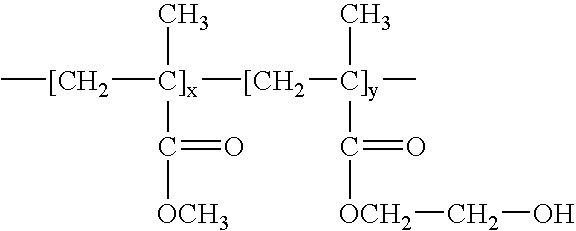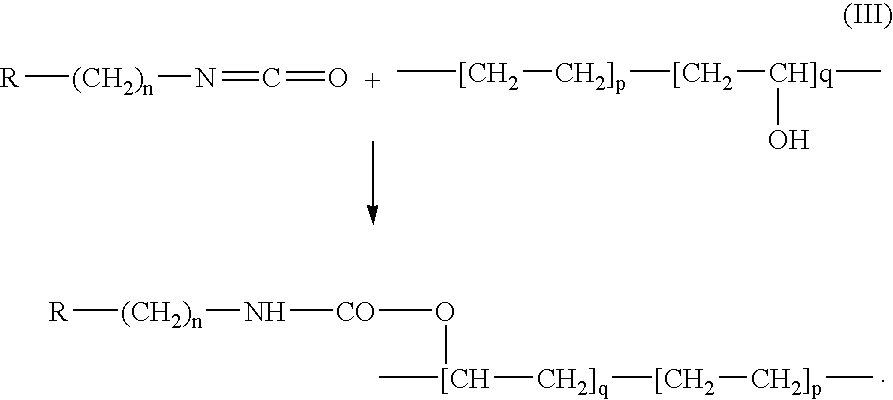Stent coatings containing self-assembled monolayers
a technology of monolayers and stents, applied in the field of coatings for implantable medical devices, can solve the problems of obstructing the conduit, affecting the patient's safety, and affecting the patient's comfort, and achieving the effect of reducing the risk of infection, and reducing the patient's comfor
- Summary
- Abstract
- Description
- Claims
- Application Information
AI Technical Summary
Benefits of technology
Problems solved by technology
Method used
Image
Examples
example 1
[0070]A first composition can be prepared by mixing the following components:
[0071](a) about 0.4 g of PBMA-HEMA, having a number average molecular weight of about 207,000 and a weight average molecular weight of about 378,000, with the molar ratio between the butylmethacrylate-derived units and the hydroxyethyl methacrylate-derived units of about 3:1;
[0072](b) about 11.568 g of acetone;
[0073](c) about 7.712 g of xylene; and
[0074](d) about 0.32 g of EVEROLIMUS.
[0075]The first composition can be applied onto the surface of a 13 mm TETRA stent (available from Guidant Corp.) by spraying and dried to form a drug-polymer layer. A spray coater having an EFD 7803 spray valve with 0.014 inch fan nozzle with a VALVEMATE 7040 control system, manufactured by EFD, Inc. of East Providence, R.I. can be used. The feed pressure can be about 0.2 atm (about 3 psi) and an atomization pressure can be about 1.35 atm (about 20 psi). The drug-polymer layer can be baked at about 80° C. for about one hour.
[0...
PUM
| Property | Measurement | Unit |
|---|---|---|
| time | aaaaa | aaaaa |
| time | aaaaa | aaaaa |
| pressure | aaaaa | aaaaa |
Abstract
Description
Claims
Application Information
 Login to View More
Login to View More - R&D
- Intellectual Property
- Life Sciences
- Materials
- Tech Scout
- Unparalleled Data Quality
- Higher Quality Content
- 60% Fewer Hallucinations
Browse by: Latest US Patents, China's latest patents, Technical Efficacy Thesaurus, Application Domain, Technology Topic, Popular Technical Reports.
© 2025 PatSnap. All rights reserved.Legal|Privacy policy|Modern Slavery Act Transparency Statement|Sitemap|About US| Contact US: help@patsnap.com



